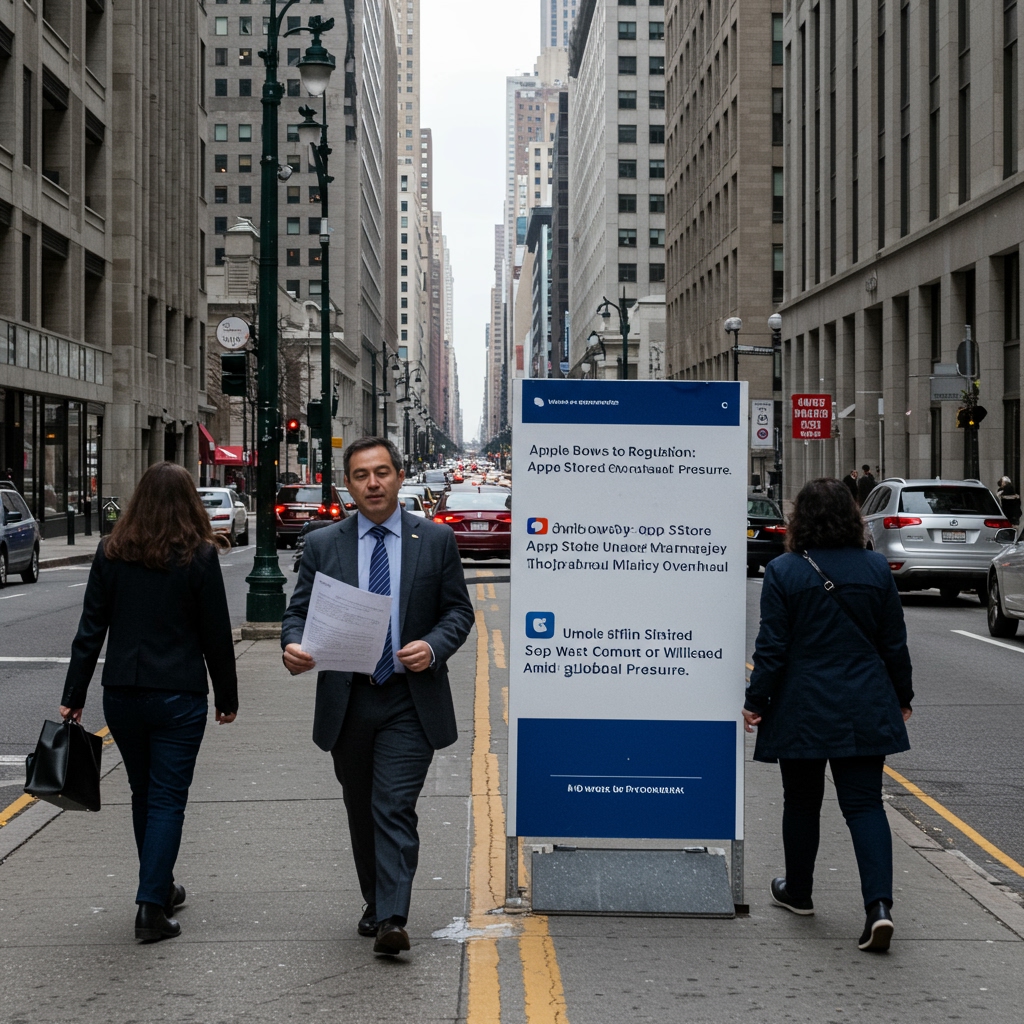Apple Inc. has announced a landmark overhaul of its App Store policies, revealing significant modifications to long-standing rules governing application distribution and payment processing. The comprehensive update represents a direct response to intensifying global regulatory scrutiny, particularly aimed at aligning with mandates akin to those outlined in Europe’s stringent Digital Markets Act (DMA) and proactively addressing potential changes spurred by recent legislative developments in the United States and other jurisdictions.
These transformative changes are poised to reshape how developers interact with the Apple ecosystem, offering new avenues for reaching users and handling transactions. Key among the adjustments are provisions that will permit developers in specific regions—primarily those under direct regulatory pressure like the European Union, while anticipating similar requirements elsewhere—to deploy their applications through alternative app marketplaces, moving beyond the sole distribution channel historically provided by the official App Store. Furthermore, developers will gain the ability to utilize third-party payment processing options for digital goods and services, bypassing Apple’s proprietary in-app purchase system and its associated standard commission structure.
The effective date for these extensive policy revisions is set for March 1, 2025. This date marks a pivotal moment, requiring preparation and adaptation from millions of developers worldwide who rely on Apple’s platform. As Apple navigates the complex and rapidly evolving antitrust landscapes, these changes signal a strategic pivot aimed at ensuring compliance while attempting to maintain aspects of platform integrity and business viability.
The Regulatory Catalyst: A Response to Global Scrutiny
The impetus behind Apple’s dramatic shift is undeniably the mounting pressure from regulators across the globe. The Digital Markets Act in Europe stands out as a primary driver. This comprehensive piece of legislation targets large online platforms designated as “gatekeepers” due to their significant impact on the internal market. The DMA imposes specific obligations, including requirements for gatekeepers to allow third parties to inter-operate with their own services and to permit business users to offer their services to end users outside of the gatekeeper’s platform, including through alternative distribution channels and payment systems. Apple’s App Store, controlling access to hundreds of millions of iPhone and iPad users, falls squarely within the scope of such regulation.
Beyond Europe, regulatory bodies and lawmakers in other regions, including the United States, have been actively examining the market power of major technology companies. While specific recent US legislation directly comparable to the DMA’s mandates on app stores has faced legislative hurdles, the persistent antitrust focus, ongoing investigations by federal and state authorities, and the threat of future regulation have clearly played a role in Apple’s decision to make proactive, platform-wide changes rather than addressing regulatory demands piecemeal in each jurisdiction.
This confluence of global regulatory pressure has forced Apple to reassess its long-held control over its mobile software ecosystem. The announced policy changes are, therefore, less of a voluntary strategic shift and more a mandated evolution driven by external legal and political forces.
Key Policy Shifts: Opening Distribution and Payments
The core of Apple’s announced policy changes rests on two pillars: allowing alternative app distribution and enabling third-party payment processing.
First, the introduction of support for alternative app marketplaces is a fundamental departure. For developers in regions covered by the new rules, this means they will no longer be exclusively tied to the official App Store for distributing their iOS applications. Third-party companies or even developers themselves could potentially establish and operate their own app stores from which users could download and install apps on their iPhones or iPads. This could foster greater competition in app distribution and potentially lead to varied policies, features, and fee structures across different marketplaces. Apple is expected to implement technical safeguards to ensure that apps distributed via these alternative channels meet certain security and functionality standards, though the specifics of developer requirements and potential associated fees for this new distribution model are critical details developers will need to understand.
Second, the ability for developers to use third-party payment processing options for digital goods and services within their apps marks another significant change. Previously, for in-app digital content, developers were required to use Apple’s own in-app purchase system, subject to a commission (typically 15% or 30%). Under the new policies, developers will be able to integrate payment systems from providers like Stripe, PayPal, or others, bypassing Apple’s system entirely for these transactions. This change has the potential to significantly impact Apple’s service revenue, which has become an increasingly important part of its business model. Developers opting for third-party payment processors will likely face different fee structures from those providers, and Apple has indicated it may still implement certain fees related to the use of its platform technology and intellectual property, even when its payment system is bypassed. The specifics of this fee structure for external payments will be crucial for developers evaluating their options.
Implications for Millions of Developers Worldwide
The ripple effects of these changes will be felt by the millions of developers worldwide who build for the Apple ecosystem. While the most direct impact initially targets developers within jurisdictions like the EU, the precedent set by these changes and the anticipation of similar regulations emerging elsewhere mean that these updates are globally significant. Developers will face new choices and complexities.
On one hand, the potential to use alternative marketplaces could offer new avenues for reaching users, possibly with different discovery mechanisms or promotional opportunities. The option for third-party payment processing could lead to reduced transaction costs compared to Apple’s standard commissions, potentially increasing developer revenue or allowing for more flexible pricing models. This could be particularly impactful for smaller developers or those operating on thin margins.
On the other hand, navigating these new options will require significant effort. Developers might need to manage separate builds or distribution strategies for different marketplaces. Integrating third-party payment processing systems adds technical complexity and requires adherence to external providers’ terms and security requirements, as well as potentially new requirements from Apple related to these alternative systems. Developers will need to carefully evaluate the costs, benefits, and technical overhead associated with moving away from Apple’s established, integrated systems.
Navigating the Evolving Antitrust Landscapes
Apple’s announcement underscores the reality that the era of relatively unchecked control over dominant digital platforms is drawing to a close, driven by evolving antitrust landscapes. By implementing these changes, Apple seeks to preempt further regulatory mandates, potential fines, and lengthy legal battles. The chosen effective date of March 1, 2025, provides a timeline for developers and Apple itself to prepare for the technical, operational, and business model adjustments required.
While presented as policy updates, these shifts represent a fundamental reshaping of the relationship between Apple and its developer community, forced by external regulatory imperative. The coming months will be critical as Apple releases more detailed technical and business terms surrounding these changes, allowing developers to fully assess the impact on their operations and strategies. The success of these new policies, both in satisfying regulators and providing viable options for developers, remains to be seen, but the digital marketplace for Apple’s platform is undoubtedly entering a new, more open, and complex phase.





